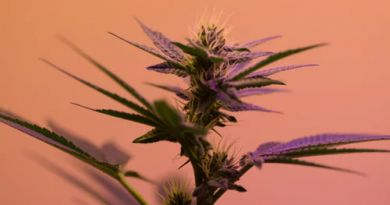Kratom – a non-addictive painkiller?
A non-addictive painkiller? Impossible? When you suffer severe pain and you visit a doctor you will almost always be given a derivative of opium in the form of a pill like Vicodin or a fluid like morphine. For very severe pain there are artificial opiates such as Oxycontin that is commonly given for cancer pain. While these are good for killing pain initially, they soon lose their potency as the body gets used to it, and consequently people need more and more to do the same job. Molecules in the South East Asian herb Mitragyna speciosa or kratom however may be the answer to the problem – they have been shown to kill pain without needing more and more.
The problem with opium
When you think of an opiate addict you might naturally imagine a deadbeat junkie injecting heroin into an unusual body part in a back alley. In most cases of opiate addiction this really isn’t what you will find. Most opiate addicts were originally prescribed a painkiller by their doctor and found that it was a living Hell to come off, or that their bodies got so used to the chemicals in their system they needed every greater quantities to tackle their pain. Consequently there are millions of people addicted to opiates around the world who didn’t get introduced to the drug by falling into the wrong social circle and experimenting with needles but instead got hooked by their family doctor
A new way forward
Over hundreds – possibly thousands of years – indigenous people in South East Asia have been drinking herbal infusions of a plant that grows all over the region called Mitragyna speciosa (Kratom). They do this for a variety of reasons, including pain management and even to tackle opium addiction. It was only ‘discovered’ in the West in the last ten or so years, and now people can find kratom for sale in the US very easily.
Medical researchers have got very excited about the painkilling molecules in the herb. The top science publication Scientific American explained why: “The ideal analgesic would not have the high risk of addiction, withdrawal or fatal respiratory slowdowns that have turned opioid abuse into a massive epidemic. The holy grail of painkillers would not induce the seductive euphoria of common opioids or their less-pleasant side effects like itching or constipation. A painkiller with just one of these properties would be great, but Majumdar thinks he has stumbled onto a class of chemicals that might have them all. They are found in kratom.”
Kratom is commonly drunk as a herbal infusion as you might a green tea, yet its painkilling effects are one of the most powerful discovered in a natural herb since early physicians found the numbing effects of opium hundreds of years ago.
Kratom was almost banned in America in November 2016 but the Drug Enforcement Agency (DEA) backed down for the first time in history due to the public and scientific community outcry. It seems that kratom is here to stay as an alternative to the effective but very addictive opiates it may one day replace. Sometimes passing a medical test can be challenging after taking these painkillers but you can click here and learn how you can get through.





I have been taking Kratom for a year and a half. Before kratom I was on Percocet for severe back and hip pain. I work as a firefighter and can not be on an opioid while on duty so I was eating Motrin and Aleve like candy ( bad for the liver ). After I found Kratom my life is 100% better. No pain, me meds and I am able to do my job pain free. This is an amazing plant.
Kratom has literally been a life saver for me. The red strains help me with pain management and sleep, while the green strains give me energy. Felt much better since I come off the prescription opiates.